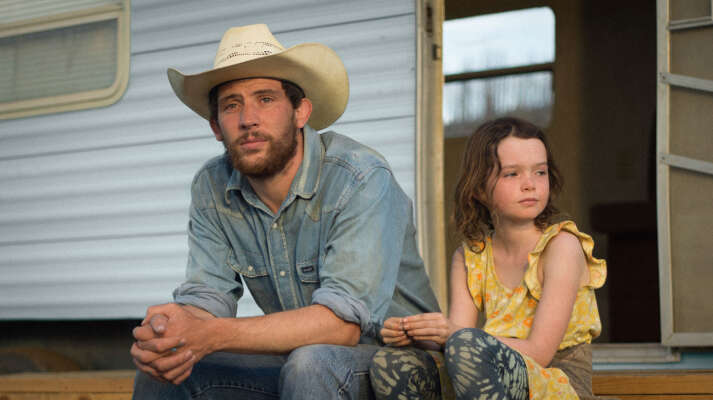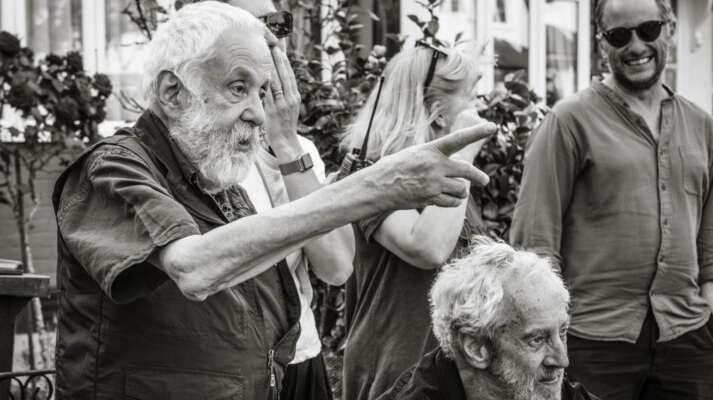The Heroic Taj Mahal Palace Hotel
The legendary landmark at the heart of Hotel Mumbai
The Heroic Taj Mahal Palace Hotel
Written by Peter Bowen
Anthony Maras' Hotel Mumbai recreates the terrifying ordeal endured by the guests and employees of the city's famed Taj Mahal Palace Hotel when it was attacked in 2008. On November 26, ten terrorists spread out across the city, targeting cafes, hospitals, and train stations, with the ultimate aim of taking over the famed hotel, the grand palace located across from the historic Gateway of India on the shore of the Arabian Sea. As harrowing as the attacks were, the hotel's staff, who worked selflessly to shepherd guests to safety, were nothing short of heroic. A cast that includes Dev Patel, Armie Hammer, Nazanin Boniadi, and Anupam Kher helps tell the remarkable story of those caught in the hotel for three long days of the attack. To give a better sense of what makes the Taj Mahal Palace Hotel so special to its employees and guests, as well as the people of Mumbai-and what made it such a potent target for terrorism-we explore the Taj's rich history, its many legends, and the lengths the filmmakers took to recreate it for the film
In 1903, when the Taj Mahal Palace Hotel opened its doors in Mumbai, it quickly became the stuff of legend and myth. Even its very origins have been shrouded in mystery. Many claimed that the industrialist Jamsetji Tata founded the Taj after being denied entrance into the "European only" Watson Hotel. Historian Sharada Dwivedi claims, however, that Tata built it "purely for the love of the city." After the Great Epidemic of 1896 decimated Mumbai, Tata wanted to reinvest in the city he loved by establishing "a place where Europeans and Indians could meet on equal ground." Although Tata would die the next year, his dream lived on. The luxurious landmark quickly became an essential destination for fashionable travellers, affluent Indians, and leaders from around the world.

Designed by Indian architects Raosaheb Sitaram Khanderao Vaidya and DN Mirza in the dominant 19th Indo-Gothic style with a massive Florentine dome, the hotel would lead Mumbai into the 20th century in a variety of ways. It was the first hotel to have electricity, then later air conditioning. From the start, it offered an array of international amenities from German elevators to Turkish baths to American electrical fans, many which were acquired by Tata on an international buying spree prior to the hotel's opening. In the late 1960s, the Taj housed India's first nightclub, Blow Up, and later Pierre Cardin staged India's first fashion show in its grand ballroom. In the 1970s, the hotel expanded its footprint with the addition of a 22-story tower that housed India's first 24-hour restaurant. While aspects of the hotel have changed-the horse-and-carriage driveway was converted into a swimming pool area-its iconic palatial façade has remained the same.
While the hotel is celebrated for its Western guest list, which includes stars from all cultural strata-from King George V to President Obama, from Jackie Onassis to Oprah Winfrey, and from Mick Jagger to Madonna-it has been equally popular with Indians. "Indian Princesses and Maharajas from all over the country… saw it as a luxurious escape from the formality of their home states, " explains Director of Public Relations Nisha Dhage. Indeed hotel legends include tales of a maharaja showing up with his pet tiger by his side at the reception desk as well as the time George Harrison took sitar lessons from Ravi Shankar in the suite now named for the famous Indian musician. The hotel has played its part in Indian history more than once. During World War I, the place was converted into a hospital with 600 beds. Mahatma Gandhi used the ballroom to address a group of English authorities about Indian independence. And in 1947, Lord Louis Mountbatten, the final viceroy of British India, gave his last speech there before leaving India.

"Creating the Taj, which is a very elaborate, beautiful, old heritage building…has been the biggest challenge on this film without a doubt," expressed production designer Steven Jones-Evans. While many of the hotel's exteriors were shot on location and altered digitally for the film, the hotel's interiors were recreated at the Adelaide Studios in Australia, a practical necessity since the Taj remains a busy, fully functioning business. In recreating the hotel for the film, the filmmakers crafted the various spaces, from the lobby to the individual rooms to the kitchen and public space of the Chambers Club, to both set the stage for the film's multi-layered narrative and highlight the hotel's unique character. As Dev Patel points out, "The great thing about hotels is that they are kind of a microcosm where all kind of strata of society can collide." For Variety, the film highlights that diversity by allowing the story's "many narrative strands" to take "excellent advantage of the spaces Maras' production design team so meticulously dressed to suggest the Taj hotel."
Beyond recreating the hotel's majestic architectural flourishes, Maras fills his film with the communal spirit that has made the Taj so unique. In doing research for the film, Maras recalls how "'The Taj will keep us safe'… was the initial response of most survivors of the siege." The guests' faith in the hotel was proven justified by the heroic actions of the hotel's staff. So unique and extraordinary was the staff's response to the attacks that in 2011The Harvard Business Review published "The Ordinary Heroes of the Taj," a organizational culture study that attempts to uncover what made the staff of the hotel so exceptional-and how other business might duplicate their formula. In the end, the study found the hotel employees' ordinary courage to be in fact extraordinary, noting, "To be sure, no single factor can explain the employees' valor."


